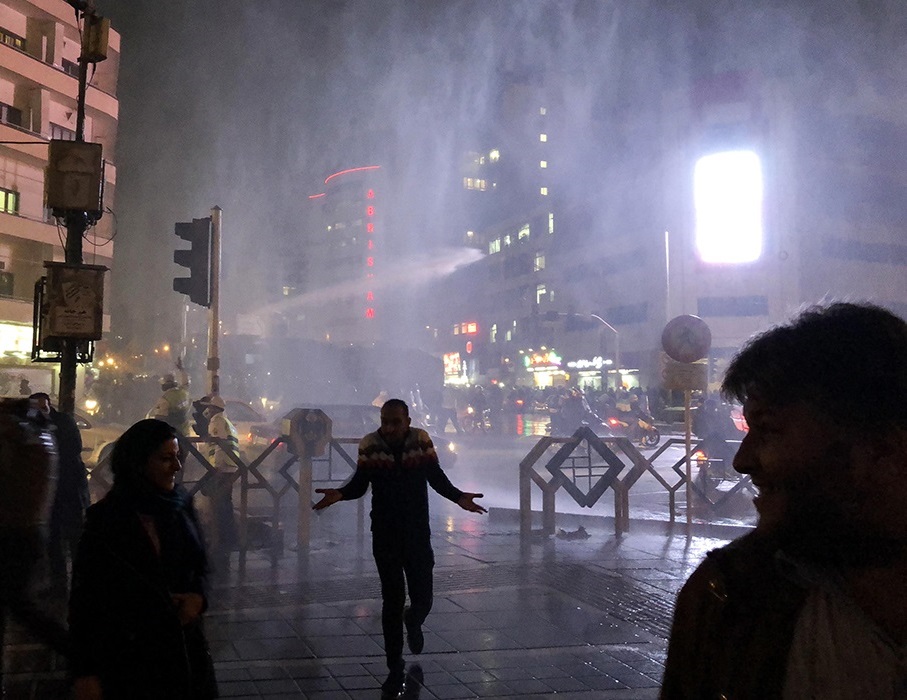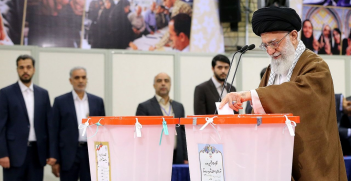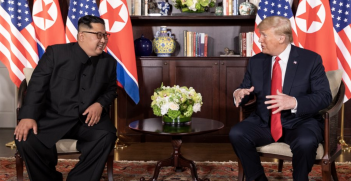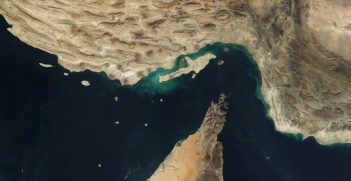Protests Over Petrol Put Iran’s Government on Notice

Petrol rationing and major fuel price hikes in Iran, and the rioting that followed, have demonstrated the extent to which international sanctions are hurting the oil-rich nation.
Protests broke out in more than 50 cities and towns after the government’s announcement on 15 November that the rationing and price rises would be imposed with immediate effect. Most of the demonstrations appear to have been peaceful. However, international TV has shown scenes of destructive violence in some cities. About 1,000 people have been arrested and an unknown number of demonstrators have been killed in confrontations with security forces.
These new measures have imposed a monthly petrol ration of 60 litres, and a 50 percent price hike to 15,000 rials (about AU $0.52, at the official exchange rate) per litre, with an additional 30,000 rials (about AU $1.04) per litre for purchases in excess of the ration. Although these prices appear very low compared with most other countries, they are significant in an Iranian context. Traditionally, fuel has been heavily subsidised by the government, and given that most people are suffering the multiple effects of the US “maximum pressure” program targeting Iran’s economy, they are less able to absorb higher prices.
The decision to impose these new measures was taken by Iran’s Supreme Council of Economic Coordination, its leadership comprising President Hassan Rouhani (a moderate), chief of the judiciary Ebrahim Raisi (a hardline cleric and Rouhani’s major rival in the 2017 presidential election), and speaker of the parliament (Majlis) Ali Larijani (a conservative). Supreme Leader Ayatollah Ali Khamenei publicly backed the council’s decision in a statement on 17 November.
This broad-based decision suggests the increases are irreversible and, for now, above factional politics. They were imposed without any prior public notice, although local media had been speculating about the possibility since May. But the state of the economy, and the urgent need for budget reform, indicate the increases were unavoidable.
US sanctions have hit Iran’s economy very hard. According to the International Monetary Fund, Iran’s economy is expected to contract by about 9.5 percent this year. Reasons include the very high loss of revenue from heavily restricted oil and other exports, and significant reductions in foreign investment and industrial activity. Tax revenue has dropped accordingly, the rial has depreciated about 60 percent over the past year, unemployment and underemployment have increased, and inflation is running at 35 percent.
Against this background the government can no longer afford to subsidise petrol to the same extent. In addition, it pays monthly cash subsidies to some 18 million families, or about 60 million of Iran’s 83 million people, and it’s looking at ways to supplement these payments with bonuses to those on low and middle incomes. It is to cease all subsidies to the wealthy, and use the revenue from higher petrol prices to fund the increased payments and some other priority development requirements.
Whether this concept will work as clinically as is proposed remains to be seen. The hope is that, combined with other budget reform measures, it will help to consolidate incomes and tide over the economy and the government until November next year, when Americans go to the polls. The favoured Iranian scenario is that President Donald Trump will not be re-elected, and Iran can negotiate the lifting of sanctions with a new US administration. This thinking assumes the Iranian economy will last the distance. If Trump is re-elected, a radical rethink will be needed.
Iran’s decision-makers must have anticipated a strong negative public response to the fuel price increases, including potentially some violence, especially given the concurrent demonstrations in Lebanon and Iraq driven by demands in those countries for less politicking and corruption, and more economic reform. That Iran’s government took the risk attests to the extent of economic damage suffered so far, and the urgency of measures now being taken in an attempt to offset that damage.
The demonstrations appear to be largely over—at least for now. It’s unclear how many were spontaneous and how many were organised through national networking. If they were nationally orchestrated, who was responsible and was that done from inside Iran or externally? The government’s decision to all but shut down the internet was intended to disrupt anti-government networking from all sources, especially overseas.
Not unexpectedly, Washington noted these events, the first real public sign its economic measures against Iran are biting, with Secretary of State Pompeo tweeting to demonstrators, “The United States is with you.”
Interestingly, Khamenei acknowledged the right of Iranians to protest peacefully. He attributed the violence to domestic “thugs” backed by (foreign) enemies and made it clear the government would crack down on those responsible for the rioting and related threats to state security.
These demonstrations have not threatened the survivability of the Iranian regime. Nor does it appear that Tehran’s decision to hold firm against US pressure, and to refuse to renegotiate the Joint Comprehensive Plan of Action on US terms in order to get sanctions lifted, has been challenged, at least on this occasion. But the public has sent a clear message that it’s facing serious economic hardship and it expects the government to do everything it can to provide relief.
The government is on notice, and it knows that. It’s well aware of the challenges ahead if the economy, and national unity, are to survive the next 12 months. Iran’s parliamentary elections due in February will be a litmus test of interim progress.
Ian Dudgeon is an AIIA Presidential Associate and former ACT Branch President.
This article was republished with permission from The Strategist. The original article can be found here.





